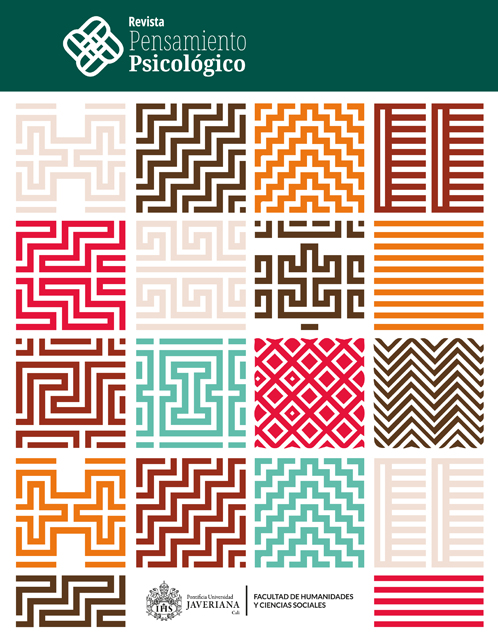Mediación tecnológica en el duelo: un análisis de los griefbots desde la psicología cultural
##plugins.themes.bootstrap3.article.main##
Resumo
Escopo. Refletir sobre o papel mediador das chamadas tanatecnologias no luto, sob a perspectiva da psicologia cultural. Especificamente, analisar as novas tecnologias digitais e os griefbots ou bots de luto. Metodologia. Entrevistas em profundidade com três enlutados, com o objetivo de analisar como imaginam a forma como os griefbots ou deathbots poderiam mediar sua experiência de luto e a memória de seus entes queridos falecidos. Resultados. As entrevistas revelaram uma atitude ambivalente em relação a essa nova tecnologia. Por um lado, mistura-se o desejo de manter laços afetivos com entes queridos e, por outro, uma certa rejeição e preocupação diante da perspectiva de interagir com um programa baseado na impressão digital do falecido. Conclusão. O estudo permitiu determinar que devemos ser cautelosos ao avaliar o efeito potencial das novas tecnologias, independentemente do contexto de utilização de cada enlutado.
Downloads
##plugins.themes.bootstrap3.article.details##

Este trabalho encontra-se publicado com a Licença Internacional Creative Commons Atribuição 4.0.
Referências
Bakhtin, M. M. (1981). The dialogic imagination. University of Texas Press.
Brescó, I., & Wagoner, B. (2019). Memory, Mourning, and Memorials. En K. Murakami, T. Kono, T. Zittoun, & J. Cresswell (Eds.), Ethos of Theorizing (pp. 222-233). Captus Press.
Brescó, I., Roncancio, M., Branco, A. y Mattos, E. (2019). Psicología cultural: un camino de ida y vuelta entre la mente y la cultura. Estudios de Psicología, 40(1), 1-9. https://doi.org/10.1080/02109395.2019.1565388
Brooker, C. (2013). Be Right Back [Episodio de serie de televisión]. En Black Mirror. Channel 4.
Brubaker, J. R., Hayes, G. R., & Dourish, P. (2013). Beyond the grave: Facebook as a site for the expansion of death and mourning. The Information Society: An International Journal, 29(3), 152-163. https://doi.org/10.1080/01972243.2013.777300
Despret, V. (2015). Au bonheur des morts. Récits de ceux qui restent. La Découverte.
Giorgi, A. (2012). The Descriptive Phenomenological Psychological Method. Journal of Phenomenological Psychology, 43(1), 3-12. https://doi.org/10.1163/156916212X632934
Jiménez-Alonso, B. (2023). Reflexiones desde la ética del cuidado y una epistemología feminista sobre las prácticas del acompañamiento al duelo, la pérdida y el final de vida. FUOC.
Jiménez-Alonso, B. y Brescó, I. (2022a). ¿Griefbots para despedirnos de nuestros seres queridos fallecidos? Algunas consideraciones psicológicas y éticas. Psicosomática y Psiquiatría, 20, 42-53. https://doi.org/10.34810/PsicosomPsiquiatrnum200404
Jiménez-Alonso, B., & Brescó, I. (2022b). Grief, Photography and Meaning Making: A Psychological Constructivist Approach. Culture & Psychology, 28(1), 107-132. https://doi.org/10.1177/1354067X211015416
Jiménez-Alonso, B., & Brescó, I. (2023). Griefbots: a new way of communicating with the dead? Integrative Psychological and Behavioral Science, 57, 466-481. https://doi.org/10.1007/s12124-022-09679-3
Josephs, I. E. (1998). Constructing one’s self in the city of the silent: Dialogue, symbols, and the role of ‘as-if’ in self-development. Human Development, 41(3), 180-195. https://doi.org/10.1159/000022578
Kasket, E. (2012). Continuing bonds in the age of social networking: Facebook as a modern-day medium. Bereavement Care, 31(2), 62-69. https://doi.org/10.1080/02682621.2012.710493
Klass, D., Silverman, P. R., & Nickman, S. L. (Eds.) (1996). Continuing Bonds: New Understandings of Grief. Taylor & Francis.
Langdridge, D. (2007). Phenomenological Psychology: Theory, research and method. Pearson Education.
Neimeyer, R., Klass, D., & Dennis, M. R. (2014). A Social Constructionist Account of Grief: Loss and the Narration of Meaning. Death Studies, 38, 485-498. https://doi.org/10.1080/07481187.2014.913454
Norlock, K. (2017). Real (and) imaginal relationships with the dead. The Journal of Value Inquiry, 51(2), 341-56. https://doi.org/10.1007/s10790-016-9573-6
Scanlan, C. L. (2020). Preparing for the Unanticipated: Challenges in Conducting Semi-Structured, In-Depth Interviews. Sage.
Sofka, C. (1997). Social Support “Internetworks,” Caskets for Sale, and More: Thanatology and the Information Superhighway. Death Studies, 21(6), 553-574. https://doi.org/10.1080/074811897201778
Vallès-Peris, N. y Domènech, M. (2020). Robots para los cuidados. La ética de la acción mesurada frente a la incertidumbre. Cuadernos de Bioética, 31(101), 87-100. https://doi.org/10.30444/CB.54
Valsiner, J. (2014). Functional reality of the quasi-real: Gegenstandstheorie and cultural psychology today. Culture & Psychology, 20(3), 285-307. https://doi.org/10.1177/1354067X14542532
Vygotsky, L. S. (1978). Mind in Action: The Development of Higher Psychological Processes. Harvard University Press.
Vygotsky, L. (2004). Imagination and creativity in childhood. Journal of Russian and East European Psychology, 42(1), 7-97. https://doi.org/10.1080/10610405.2004.11059210
Walter, T., Hourizi, R., Moncur, W., & Pitsillides, S. (2012). Does the Internet Change How We Die and Mourn? Overview and Analysis. Omega, 64(4), 275-302. https://doi.org/10.2190/OM.64.4.a
Wertsch, J. (1998). Mind as action. Oxford University Press.
Zittoun, T., & Gillespie, A. (2016). Imagination in human and cultural development. Routledge.

